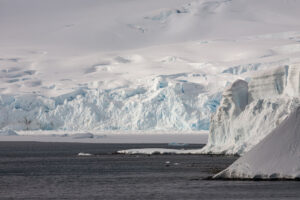Norway’s history of polar exploration is storied. From Erik the Red’s adventures in Greenland to Roald Amundsen beating Robert Falcon Scott to the bottom of the world to Liv Arnesen’s historic trek to the South Pole, the Norwegians have it on lock.
Hoping to add his name to this list is Arne-Kristian Teigland. The Øystese, Norway native has plans this season to ski from Hercules Inlet to the South Pole. Teigland hopes to make his mark along this well-traveled path by snatching the year-old speed record from Frenchman Vincent Colliard‘s capable hands.
To do it, he’ll have to travel 1,130km in under 22 days, 6 hours, and 8 minutes. That’s 54km a day through winds, whiteouts, soft snow, sastrugi, and everything else Antarctica can throw at him.

Photo: Arne-Kristian Teigland
Colliard set his record in January 2024, besting Norwegian Christian Eide’s impressive 2011 time of 24 days, 1 hour, and 13 minutes. Between 2011 and 2024, a few hopefuls gave it a shot, but no one came within striking distance.
According to Teigland’s website, giving the record back to Norway is a matter of national pride. In his early 40s, Teigland has experience moving quickly with a sled in Antarctica. He’s turned in impressive finishes in the Expedition Amundsen ski race in Hardangervidda, Norway.
Home-grown skills
One thing Teigland has going for him is his home training ground: Finse, a remote area of Norway known for its ski-friendly terrain and weather. Amundsen, Scott, and Ernest Shackleton all trained in the region.
A survey of Teigland’s social media reveals the usual detailed Norwegian planning. He’ll begin his attempt with a well-dialed itinerary and custom-made sled and gear, all the better to trim every possible gram from his expedition weight.
That’s important because manhauling (pulling a weighted sled with human power as opposed to dogs or motorized vehicles) depends largely on sweet snow conditions. A few years ago, Eric Larsen tried to break Eide’s original record but an unusual deep-snow year troubled everyone and made speed records out of the question. Cold also increases friction, which is why Colliard began in late December when warmer temperatures were on his side. The milder the snow, the better the sled glides, and the less it feels like a sack of potatoes.
The Norwegian should begin his expedition sometime in the next few weeks (ExplorersWeb currently has no information on an exact start date). You can follow along via live tracking here.





